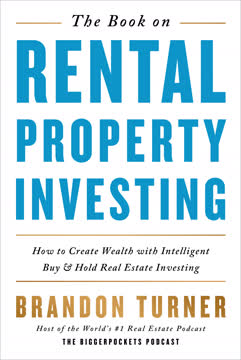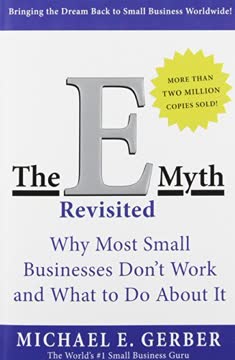つの重要なポイント
1. 交渉のための情報収集術をマスターする
情報は力である。
知識は重要である。 不動産交渉において、最も多くの情報を持つ側が有利であることが多い。物件、市場状況、相手方の動機について徹底的に調査する。公的記録、オンラインリソース、近隣住民との会話を活用して貴重な洞察を得る。
動機を活用する。 売り手の動機を理解することは、成功する交渉戦略を立てる鍵である。差し押さえの危機に直面しているのか、仕事のために引っ越すのか、家族の事情があるのか。この情報は、売り手の緊急度や価格や条件に対する柔軟性を判断するのに役立つ。
調査すべき主要な分野:
- 物件の履歴と状態
- 地元の市場動向と比較販売
- 売り手の財政状況と動機
- 近隣の開発計画と将来の計画
2. ラポールと信頼を築き、ウィンウィンの結果を創出する
誰かがあなたを好きになれば、彼らはあなたの成功を望む。
つながりを築く。 成功する交渉には、相手とのラポールを築くことが重要である。共通点を見つけ、積極的に聞き、共感を示すことに焦点を当てる。このアプローチは協力的な雰囲気を作り、相互に有益な合意に達する可能性を高める。
心理的技術を活用する。 ミラーリング(相手のボディランゲージや話し方を微妙に合わせる)を使って潜在的なラポールを築く。オープンエンドの質問をして、相手の反応に真剣に関心を示すことで、積極的な聞き方を実践する。これらの技術は信頼を育み、相手があなたの提案に対してより受け入れやすくなる。
ラポール構築の戦略:
- 共通の興味や経験を見つける
- 会話で相手の名前を使う
- 言葉と非言葉の合図を通じて積極的な聞き方を示す
- 相手の立場に対する尊重と感謝を示す
3. 交渉のトーンを設定する戦略的な初期提案を作成する
最初のオファーで恥ずかしくないなら、出しすぎた。
断固たる態度と現実主義のバランスを取る。 初期提案は交渉全体のトーンを設定する。交渉の余地を残しつつ、売り手を侮辱したり、即座に話を終わらせたりしないような価格を目指す。初期提案を決定する際には、売り手の動機、物件の状態、市場要因を考慮する。
価格以外の条件を組み込む。 価格が売り手の期待より低くても、迅速なクロージング、柔軟な引っ越し日、物件の現状引き渡しなどの有利な条件を含めることで、オファーをより魅力的にする。
初期提案で考慮すべき要素:
- 売り手の最低受け入れ可能なオファー(MAO)
- 自分の最大受け入れ可能なオファー
- 現在の市場状況と比較販売
- 物件の状態と必要な修理
- 売り手の動機と売却の緊急性
4. 自分の利益を守るために条件を賢く使う
条件は基本的に、クロージング前にXが発生(または発生しない)場合、結果はYであると言う。
保護と魅力のバランスを取る。 条件は買い手としての利益を守るために重要だが、多すぎるとオファーの魅力が減る。資金調達、検査、評価など、最も重要な条件だけを含めることに焦点を当てる。このアプローチは真剣さを示しつつ、自分の立場を守る。
タイミングを戦略的に設定する。 条件を明確な期限で構成し、できるだけ少ない有効期限にまとめる。これにより、交渉プロセスが簡素化され、必要な再交渉を管理しやすくなる。
一般的な不動産条件:
- 検査/デューデリジェンス
- 資金調達
- 評価
- 現在の家の売却
- タイトルレビュー
5. 両者を満たすことに焦点を当てて再交渉を進める
再交渉の目標は、各当事者を元の状態に戻すこと—それ以上でもそれ以下でもない。
公平性と信頼を維持する。 デューデリジェンス期間中に問題が発生した場合、再交渉は両者を元の状態に戻すことを目指して進める。これは、特定の問題に対処し、追加の利点を得ようとしたり、交渉全体を再開したりしないことを意味する。
問題に迅速に対処する。 再交渉の状況には迅速かつ透明に対処する。検査報告書や修理見積もりなど、自分の立場を裏付ける文書を提供する。価格調整、修理、その他の譲歩を含む、公平な解決策を提供する準備をする。
一般的な再交渉のシナリオ:
- 検査で予期しない問題が発覚
- 評価が購入価格を下回る
- 資金調達が失敗するか、変更が必要
- タイトルの問題が発生
6. 交渉中にコントロールを維持するための高度な戦術を使用する
摩擦は友である。
戦略的な不快感を受け入れる。 交渉中の緊張は正常であり、時には有益である。それは両者が結果に投資していることを示し、より満足のいく結果につながる可能性がある。適切な場合には「ノー」と言ったり、もっと要求したりすることを恐れない。
沈黙をツールとして使う。 オファーやカウンターオファーを出した後、沈黙を埋める衝動に抵抗する。相手が先に反応するのを待つことで、追加の譲歩を引き出したり、重要な情報を引き出したりすることができる。
高度な交渉戦術:
- 最後の譲歩を求める
- 自分の立場を裏付ける文書を使用する
- 上位の権限に訴える
- 譲歩を戦略的に束ねる
- 繰り返しの要求に対する「ペナルティ」を実施する
7. 売却時にアプローチを適応させて物件価値を最大化する
物件をリストして売却するには、地域に非常に精通したプロのリスティングエージェントを強くお勧めします。
戦略的に価格を設定する。 売却時には、リスト価格を公正市場価値とその5%上の間に設定する。このアプローチは真剣な買い手を引き付け、交渉の余地を残す。過剰な価格設定は、リストが古くなり、最終的に低いオファーを招く可能性があるため避ける。
オファーパッケージ全体を考慮する。 オファーを評価する際には、価格だけに焦点を当てない。買い手の資金調達、条件、提案されたクロージングタイムラインなどの要素を考慮する。時には、条件が良い少し低いオファーが、リスクや複雑さが多い高いオファーよりも有利であることがある。
売却時の主要な考慮事項:
- 市場状況と最近の比較販売
- 物件の状態と独自の特徴
- 買い手の財政的資格と動機
- 提案された条件とクロージングタイムライン
- 評価の問題の可能性
最終更新日:
FAQ
What's The Book on Negotiating Real Estate about?
- Focus on Negotiation Skills: The book emphasizes the importance of negotiation in real estate transactions, offering strategies to secure the best deals.
- Expert Insights: Authored by J. Scott, Mark Ferguson, and Carol Scott, it draws on their extensive real estate investing experience.
- Comprehensive Guide: Covers various negotiation aspects, including preparation, rapport building, making offers, and handling counteroffers.
Why should I read The Book on Negotiating Real Estate?
- Master Negotiation Techniques: Provides actionable strategies to improve negotiation skills, crucial for real estate success.
- Learn from Experts: Authors share personal experiences and insights, allowing readers to learn from their successes and mistakes.
- Increase Profitability: Applying the techniques can save money and time, leading to more profitable transactions.
What are the key takeaways of The Book on Negotiating Real Estate?
- Preparation is Key: Successful negotiation begins with thorough research and preparation.
- Build Rapport: Establishing trust with the other party encourages cooperation and reduces conflict.
- Understand Seller Motivation: Knowing the seller's needs provides leverage in negotiations.
What are the best quotes from The Book on Negotiating Real Estate and what do they mean?
- “Both sides want something.”: Highlights the mutual needs in negotiation, crucial for reaching an agreement.
- “The more motivated a seller is...”: Emphasizes assessing seller motivation to determine an appropriate opening bid.
- “If you’re not embarrassed...”: Suggests a low initial offer can create negotiation room but must be balanced.
What negotiation principles are discussed in The Book on Negotiating Real Estate?
- Understanding MAO: Introduces Minimum Acceptable Offer, crucial for formulating offers.
- Leverage and Power: Discusses how leverage shifts during negotiations and influences outcomes.
- Concessions as Currency: Explains that negotiations are built on concessions, leading to successful agreements.
How does The Book on Negotiating Real Estate suggest building rapport with sellers?
- Personal Connection: Find common ground with the seller to foster trust.
- Active Listening: Listen to the seller’s needs and concerns to gather valuable information.
- Use of Names: Using the seller’s name enhances rapport and personal connection.
What strategies does The Book on Negotiating Real Estate recommend for making an initial offer?
- Research and Preparation: Gather information about the property, seller’s motivations, and market conditions.
- Avoid Round Numbers: Non-round figures create a perception of thoughtfulness and seriousness.
- Set an Anchor: Make the first offer an anchor point, ideally lower than your target price.
How can I determine a seller's motivation according to The Book on Negotiating Real Estate?
- Ask Open-Ended Questions: Encourage the seller to share their reasons for selling.
- Listen for Cues: Pay attention to language and emotional tone for insights into urgency.
- Gauge Expectations: Understand the seller’s price and terms expectations to assess motivation.
What are some common contingencies mentioned in The Book on Negotiating Real Estate?
- Inspection Contingency: Allows backing out if significant issues are found during inspection.
- Financing Contingency: Right to withdraw if unable to secure financing, protecting from financial risk.
- Appraisal Contingency: Ensures renegotiation or exit if the property appraises below the purchase price.
How does The Book on Negotiating Real Estate suggest handling counteroffers?
- Be Prepared to Compromise: Flexibility and concessions keep negotiations moving forward.
- Maintain Communication: Open lines of communication clarify misunderstandings.
- Reassess Your Position: Reevaluate goals and motivations after receiving a counteroffer.
How can I make my offer more attractive according to The Book on Negotiating Real Estate?
- Limit Contingencies: Fewer contingencies make offers more attractive to sellers.
- Increase Earnest Money: Larger deposits demonstrate seriousness and commitment.
- Shorten Closing Period: Quick closings appeal to sellers wanting to finalize quickly.
What negotiation tactics are highlighted in The Book on Negotiating Real Estate?
- Priming the Seller: Start with positive aspects to create a favorable emotional state.
- Silence as a Tool: Use silence to prompt concessions or additional information.
- Appealing to Higher Authority: Indicate needing to consult someone else to maintain control.
レビュー
本書『不動産交渉の本』は、実践的なアドバイス、実際の事例、そして初心者から経験豊富な投資家まで役立つ詳細な戦略が評価され、主に好意的なレビューを受けている。多くの読者は、不動産取引における交渉プロセスを理解するために本書が価値あるものだと感じている。一部のレビュアーは、家の転売に焦点を当てている点がすべての読者にとって魅力的ではないかもしれないと指摘している。本書は会話調のトーンと、不動産以外にも応用できる点で称賛されている。いくつかの読者は、アドバイスが繰り返しや単純すぎると感じることもあるが、全体としては交渉スキルを向上させるための有用なリソースと見なされている。
Similar Books















